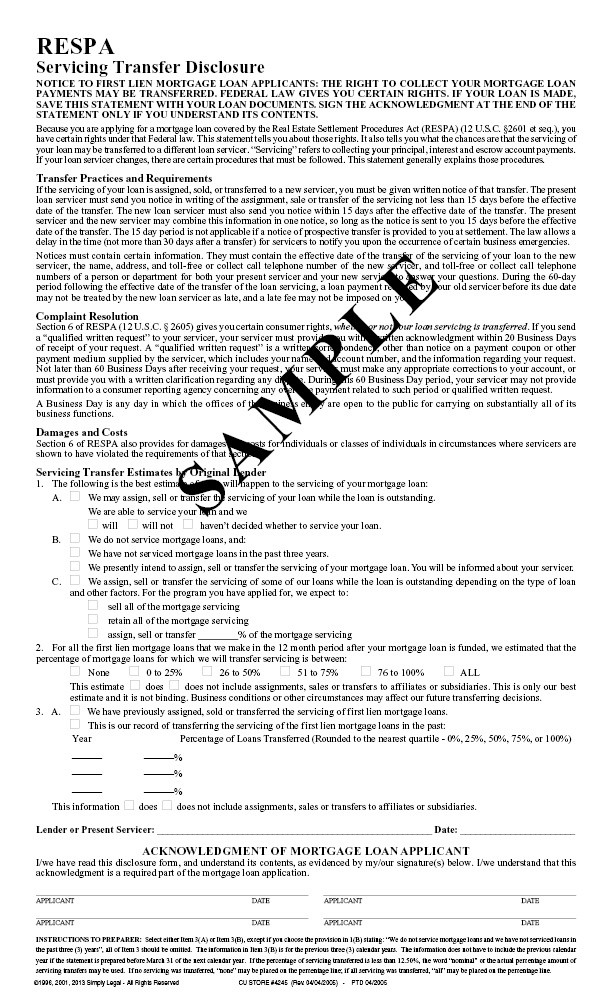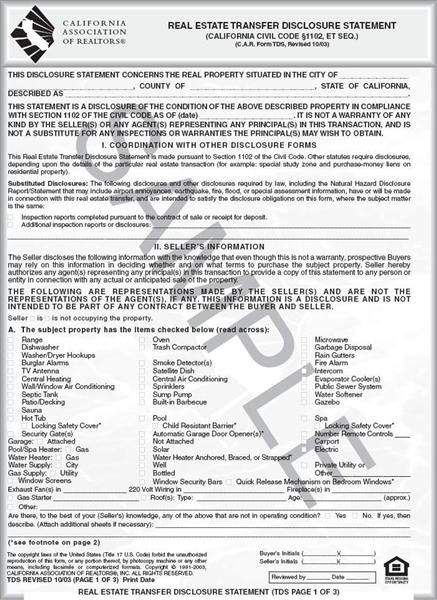What Is a California Transfer Disclosure Statement
Post on: 2 Июль, 2015 No Comment

Transfer Disclosure Statements Cover Defects. Big Stock Photo
Question: What is a California Transfer Disclosure Statement?
A reader asks: What is a Transfer Disclosure Statement? We are selling our house. The title company said we need to fill out a TDS and give it to the buyer. What can you tell me about a TDS?
Answer: It’s good that you’re ready to complete a transfer disclosure statement, and you have been advised correctly. For one thing, a transfer disclosure statement, also known in the industry as a TDS, is required by law. Section 1102 of the California Civil Code requires that every residential seller complete a TDS for the buyer. This document is one of the seller disclosures that buyers receive during their contract contingency period.
Importance of the Transfer Disclosure Statement
This three-page document is often used as supporting evidence in court when a buyer decides to sue a seller for non-disclosure. That’s why it’s very important that sellers fill it out correctly and disclose pertinent information, which may affect the buyer’s decision to move forward with the purchase.
Types of Disclosures Contained in the Transfer Disclosure Statement
Most of the form is self-explanatory, but there are a few tricky areas that even some real estate agents do not fully understand. First and foremost, realize that this form must be completed in the seller’s own handwriting. An agent cannot and will not complete this form for a seller under any circumstances. If you are unable to fill it out, ask a close relative to do it for you, but do not ask your agent.
- Date of the Disclosure
This is the date that sellers complete the disclosure. If something changes between the date the TDS is completed and the property sells, prudent sellers will update the transfer disclosure statement.
Sellers may want to make the buyer’s future home inspection part of this disclosure by checking the appropriate box, in addition to including pest reports or any other types of inspections.
Sellers should indicate whether they are presently living in the property.
The main thing you need to know about the transfer disclosure statement is that sellers are not warranting the condition of the home; sellers are simply disclosing its condition.
Section A is read across, not down, because some items to the right are associated with boxes to the left.
Sellers should check only the items that pertain to the home. For example, if your home does not have a sump pump or a gazebo, you would not check those boxes.
This section asks whether the home has a range, dishwasher, smoke detectors. rain gutters, pool, among other items, and whether water is supplied by the city, well, private utility or other. Be careful that each box that applies is checked and marked correctly. If you disclose the home has window screens, for example, and there are no screens, the buyer might demand that you buy all new screens.
Moreover, if you do not know the age of your roof, do not make up an age — nor should you say the home has 220-volt wiring if you are not certain that it does. If a buyer cannot connect a dryer because there is no 220 wiring, guess what the buyer may demand from you?
Remember to initial the first page.
If you check yes to the question that asks if you are aware of any significant defects or malfunctions in any of the following items in Section B, you will need to describe them. Even if you do not think the defect is significant, you should probably disclose it anyway, especially if you have knowledge about it.

These 16 questions ask for a lot of information, and you should read each question carefully, and think about it before answering.
For example, question 2 asks if there are features of the property that are shared in common. If you have a fence, for instance, that is most likely a shared feature between you and your neighbor. If that fence has caused disputes with your neighbors about the location of the property boundaries, you may also want to consider checking question 3 as yes.
Question 8 asks about flooding or drainage. If rain water puddles near your home, you should disclose that fact.
If you live on a busy street or your neighbor’s dog barks, consider answering yes to question 11.
Buyers aren’t likely to walk away from purchasing your home if they read that a dog barks or early morning trash collection trucks cause an occasional disturbance — they get upset, though, if those nuisances have not been disclosed.
Remember to initial AND sign page two of the transfer disclosure statement.
If you are represented by a real estate agent. your listing agent will complete the agent’s inspection disclosure. A buyer’s agent will complete a separate section. Under no circumstances should an agent ever check the box that says there are no items for disclosure. There are always items to disclose.
Agents are often advised not to diagnose the problem or deficiency, but should state it in simple terms. For example, if there are black spots in a shower, the agent does not know for certain if it is mold, and it should be disclosed as black spots.
I often see agents write buyers should get a home inspection , and that wording is silly. Agents should disclose what agents have observed. Agents are required by law to walk the property and note everything they see, even if it’s a crack in the sidewalk.
Sellers sign page three. Listing and buyer’s agents sign page three. Buyers initial and sign receipt.
If you need help preparing a transfer disclosure statement or have further questions, please consult a real estate lawyer. Real estate agents cannot provide legal advice.
At the time of writing, Elizabeth Weintraub, DRE # 00697006, is a Broker-Associate at Lyon Real Estate in Sacramento, California.














